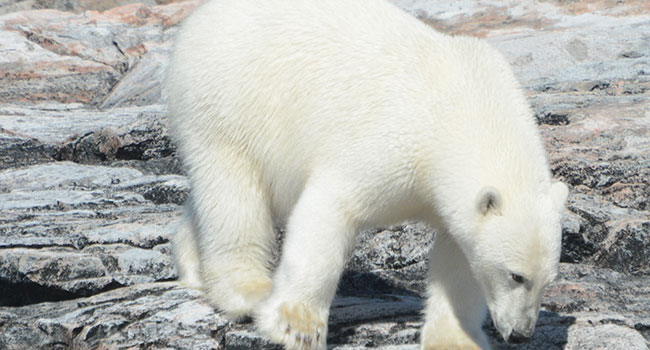 I left you in Hebron, Newfoundland and Labrador, where an eye-opening tale from the past brought home that the stability of home and property we enjoy hasn’t always been a reality for northern people.
I left you in Hebron, Newfoundland and Labrador, where an eye-opening tale from the past brought home that the stability of home and property we enjoy hasn’t always been a reality for northern people.
From Hebron, we travelled ever northward to a place I’ve never been before – Torngat Mountains National Park.
This vast expanse of wilderness encompasses about 9,700 square km from the Atlantic coast inland to the Quebec border.
Torngat (‘place of spirits’) was established in 2008 under the Labrador Inuit Land Claims Agreement. It’s the largest national park in Atlantic Canada and the southernmost national park in the Arctic Cordillera.
Our ship landed on the shores of Nachvek Fjord, in a valley once surrounded by mountains higher than the Himalayas. This is a geologically and historically significant site, where you can find evidence of life billions of years ago in the thin shale layers of rock. The chert tools tell a compelling story of the history of this wonderful landscape.
The modern landscape features over 500 species of wildflowers, trees, shrubs, ferns, mosses and liverworts. The diversity is surprising and glorious to look at.
After two days in this landscape, we journeyed further north, where another adventure awaited.
The Button Islands are part of the Arctic Archipelago near the northern tip of Labrador. Two groups of islands are separated by a channel with rapid currents flowing between them. This up-welling of water and nutrients produces an ecosystem rife with food and, of course, things that eat this marine bounty.
We saw hundreds of kittiwakes, dovekies, guillemots, murres, and bearded, harp and ringed seals.
But the polar bears were the showstoppers. We saw seven bears on that incredible outing. The most dramatic was an individual that shared the shore with us for over an hour.
It started high on a ridge, where we enjoyed distant but clear looks at its majesty. Soon it decided we deserved further attention, so it wandered down to the shore near us (we were in our Zodiacs about 150 metres distant and quite safe) and gave us the once over.
The bear foraged, rested, stared and loped along the near shore throughout this wonderful encounter. Eventually, it decided to go for a dip and chased a few seals around for a bit before returning to the shore and lumbering off up the hill. Wow!
True marine animals, polar bears spend about three-quarters of the year on the ice, hunting seals. During the summer, they come ashore and loaf and fast, taking an occasional meal when the opportunity presents.
Adapted to cold climates, they have hollow hairs that increase their insulation and help make them more buoyant when swimming, while their large feet act like snowshoes.
Next, our journey took us to Charles Francis Hall Bay just offshore from southeastern Baffin Island. Hall was an American explorer who discovered a passion for the Arctic when he was about 36 years old. He started to research and finally in 1860 headed out for a four-year adventure in search of the ill-fated Franklin expedition members and their ship.
Aboard the whaler George Henry, he eventually reached Baffin Island, where he was forced to overwinter due to ice and snow. Following compelling reports of artifacts from the Martin Frobisher mining expedition at Frobisher Bay, he continued his search the next year.
This expedition led to the publication of Hall’s Arctic Researches and Life Among the Esquimaux, in which he drew conclusions that some of Franklin’s men might still be alive. This later proved false.
Our time in this part of northern Canada was obviously less eventful than that of early explorers, but we did share in the memory of the great women and men who opened up the north. They pursued dreams that took them to dangerous and rugged spaces.
Just around the corner for us is Iqaluit in the final instalment of this series.
Geoff Carpentier is a published author, expedition guide and environmental consultant. Visit Geoff online at www.avocetnatureservices.com, on LinkedIn and on Facebook.
The views, opinions and positions expressed by columnists and contributors are the author’s alone. They do not inherently or expressly reflect the views, opinions and/or positions of our publication.



